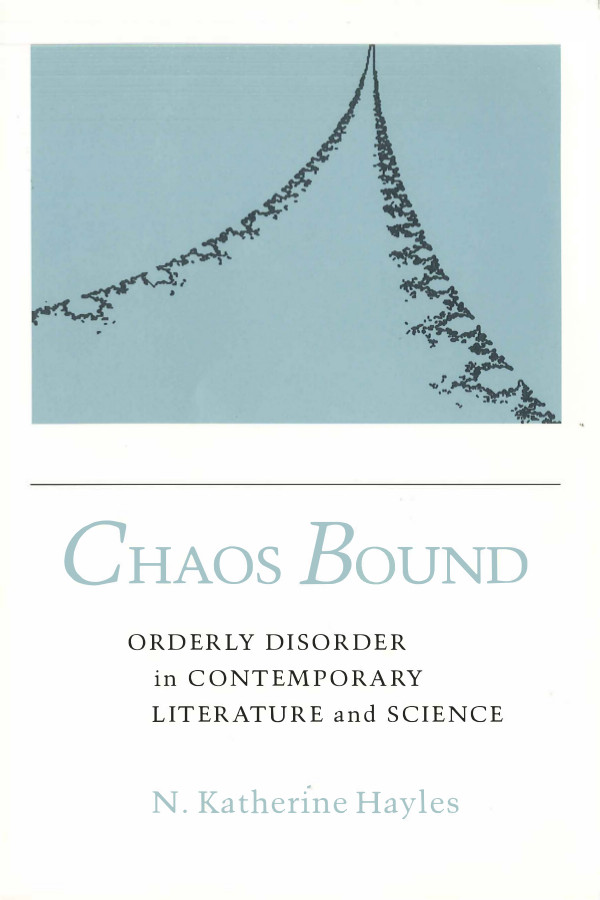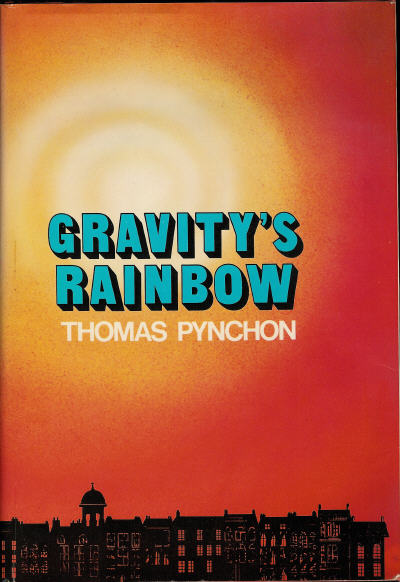N. Katherine Hayles: Chaos Bound: Orderly Disorder in Contemporary Literature and Science (1990)
Filed under book | Tags: · chaos theory, entropy, history of literature, information theory, literary theory, literature, nonlinearity, physics, postmodernism, poststructuralism, science, thermodynamics, writing

“At the same time that the study of nonlinear dynamics came into its own in the sciences, the focus of literary studies shifted toward local, fragmentary modes of analysis in which texts were no longer regarded as deterministic or predictable. N. Katherine Hayles here investigates parallels between contemporary literature and critical theory and the emerging interdisciplinary field known as the science of chaos. She finds in both scientific and literary discourse new interpretations of chaos, which is seen no longer as disorder but as a locus of maximum information and complexity. The new paradigm of chaos includes elements that, Hayles shows, were evident in literary theory and literature before they became prominent in the sciences. She asserts that such similarities between the natural and human sciences are the result not of direct influence but of roots in a common cultural matrix.
Hayles traces the evolution of the concept of chaos and evaluates the work of such theorists as Prigogine, Feigenbaum, and Mandelbrot, for whom chaos entails an unpredictably open universe in which knowledge is limited to local sites and scientific models can never exhaust the possibilities of the actual. But this view does not imply that scientists have given up the search for global explanations of natural phenomena, for chaos is conceived of as containing its own form of order. Hayles envisions chaos as a double-edged sword: it can be viewed either as a recognition that disorder plays a more important role in natural processes than had hitherto been recognized or as an extension of order into areas that had hitherto resisted formalization. She examines structures and themes of disorder in The Education of Henry Adams, Doris Lessing’s Golden Notebook, and works by Stanislaw Lem. Hayles concludes by showing how the writings of poststructuralist theorists incorporate central features of chaos theory-such as an interest in relating local sites to global structures; a conception of order and disorder as interpenetrating rather than opposed; an awareness that in complex systems small causes can lead to massive effects; and an understanding that complex systems can be both deterministic and unpredictable.
Chaos Bound contributes to and enliven current debates among chaos theorists, cultural critics and cultural historians, critical theorists, literary critics interested in nineteenth- and twentieth-century literature, researchers in nonlinear dynamics, and others concerned with the relation between science and culture.” (from the back cover)
Publisher Cornell University Press, 1990
ISBN 0801497019, 9780801497018
309 pages
via author
Review: Tom LeClair (SubStance, 1991)
See also Hayles, The Cosmic Web: Scientific Field Models and Literary Strategies in the Twentieth Century, 1984.
Comment (0)Thomas Pynchon: Gravity’s Rainbow (1973-) [EN, IT, HU]
Filed under fiction | Tags: · colonialism, conspiracy, entropy, military, sex, synchronicity, war

A few months after the Germans’ secret V-2 rocket bombs begin falling on London, British Intelligence discovers that a map of the city pinpointing the sexual conquests of one Lieutenant Tyrone Slothrop, U.S. Army, corresponds identically to a map showing V-2 impact sites. The implications of this discovery launch Slothrop on a wildly comic extravaganza.
“Gravity’s Rainbow is Pynchon’s most celebrated novel. An intricate and allusive fiction that combines and elaborates on many of the themes of his earlier work, including preterition, paranoia, racism, colonialism, conspiracy, synchronicity, and entropy, the novel has spawned a wealth of commentary and critical material, including reader’s guides, books and scholarly articles, online concordances and discussions, and art works. Its artistic value is often compared to that of James Joyce’s Ulysses. Some scholars have hailed it as the greatest American post-WW2 novel, and it has similarly been described as ‘literally an anthology of postmodernist themes and devices’.” (from Wikipedia)
A Journey Into the Mind of P, documentary on Pynchon (dir. Donatello Dubini & Fosco Dubini, 2002, 88 min)
Gravity’s Rainbow (English, 2000, EPUB)
Gravity’s Rainbow (English, undated, PDF, unpaginated)
L’arcobaleno della gravità (Italian, trans. Giuseppe Natale, 1999, no OCR, 82 MB), (OCR’d, unpaginated)
Súlyszivárvány (Hungarian, trans. János Széky, 2009, unpaginated)
Robert Smithson: The Collected Writings (1979/1996)
Filed under book | Tags: · art, art criticism, art theory, earth, ecology, entropy, land art, landscape, language, mapping, monument, non-place, time

“Since the 1979 publication of The Writings of Robert Smithson, Robert Smithson’s significance as a spokesman for a generation of artists has been widely acknowledged and the importance of his thinking to contemporary artists and art critics continues to grow. In addition to a new introduction by Jack Flam, The Collected Writings includes previously unpublished essays by Smithson and gathers hard-to-find articles, interviews, and photographs. Together these provide a full picture of his wide-ranging views on art and culture.”
First published as The Writings of Robert Smithson, New York University Press, 1979.
Revised and Expanded edition
Edited, with an Introduction by Jack Flam
Publisher University of California Press, 1996
ISBN 0520203852, 9780520203853
385 pages
via dhr
PDF (62 MB, no OCR)
PDF (18 MB, OCR, updated on 2016-12-15)

